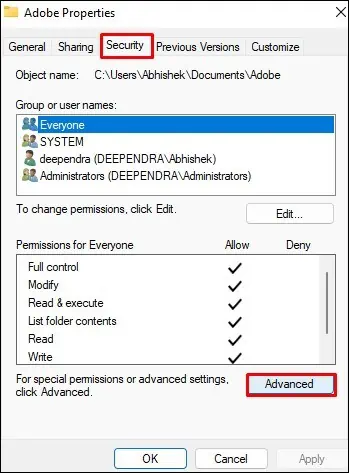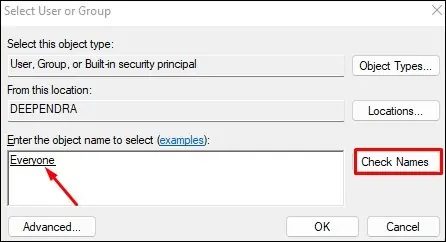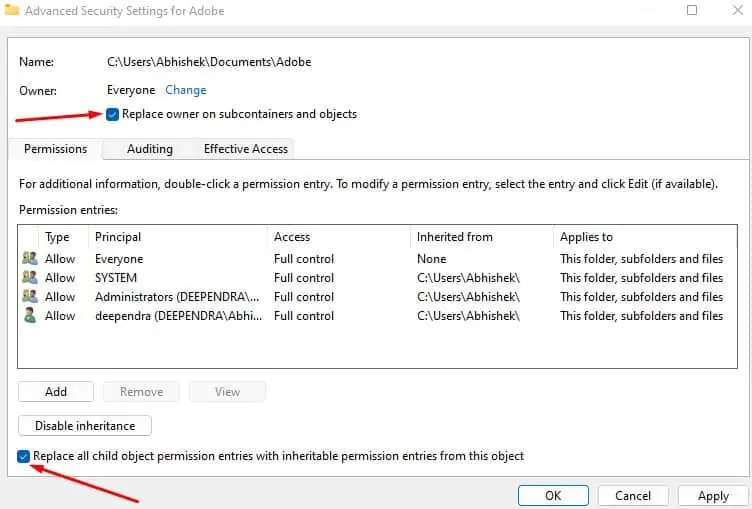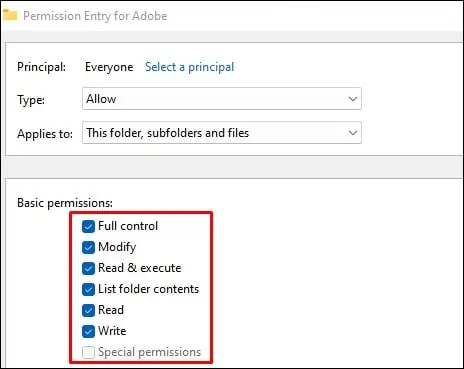Windows provides a security mechanism for files and folders that lets you define user accounts to access it. Sometimes, when trying to alter the permission settings for a folder, you might have come across the error messageFailed to enumerate objects in the container.
Mostly, this error occurs when you don’t haveownership over the foldersor say you don’t have administrator privileges. You will also encounter the error if any system files are corrupted. But don’t worry! This problem is solve able and has some simple fixes.
In this article, you will learn a few proven ways to fix this error in Windows.

Fix: Failed to enumerate objects in the container
Since giving access to your files and folders deals with privacy, you should sort out this problem as soon as possible. you may simply perform minor tweaks in your folder settings and easily sort out the issue.
Here, we have compiled a list of 5 fixes you may apply when facing this error. Let’s dive straight into them.
Take Over Ownership and Change Permissions
The first thing you may do when you face this error is change the file or folder ownership manually. This is the most recommended fix by Microsoft, and many users reported that they sorted out the issue after applying this fix.

Follow these steps to change the file ownership manually:
Use Commands to Grant Permissions
The first method should work like a charm but if you still face the error while setting the permissions, try an elevated command prompt method to grant the permissions. Here’s how:
Run CHKDSK, SFC and DISM Commands
CHKDSK mainly deals with checking and fixing the issues in the file system. It checks for errors on your hard drive and repairs them. Try running it if the above two methods do not solve your problem.Running the CHKDSK commandcan help identify and fix issues with corrupted file systems and solve the error. Follow these steps to run it:

you may also useSFCandDISMcommands since they also deal with repairing the corrupted system files. Run theSFC commandat first and see if the issue persists while changing permissions. If it does, run the DISM command afterward. Else no need to run the DISM command. Follow these steps:
Disable UAC Notifications




